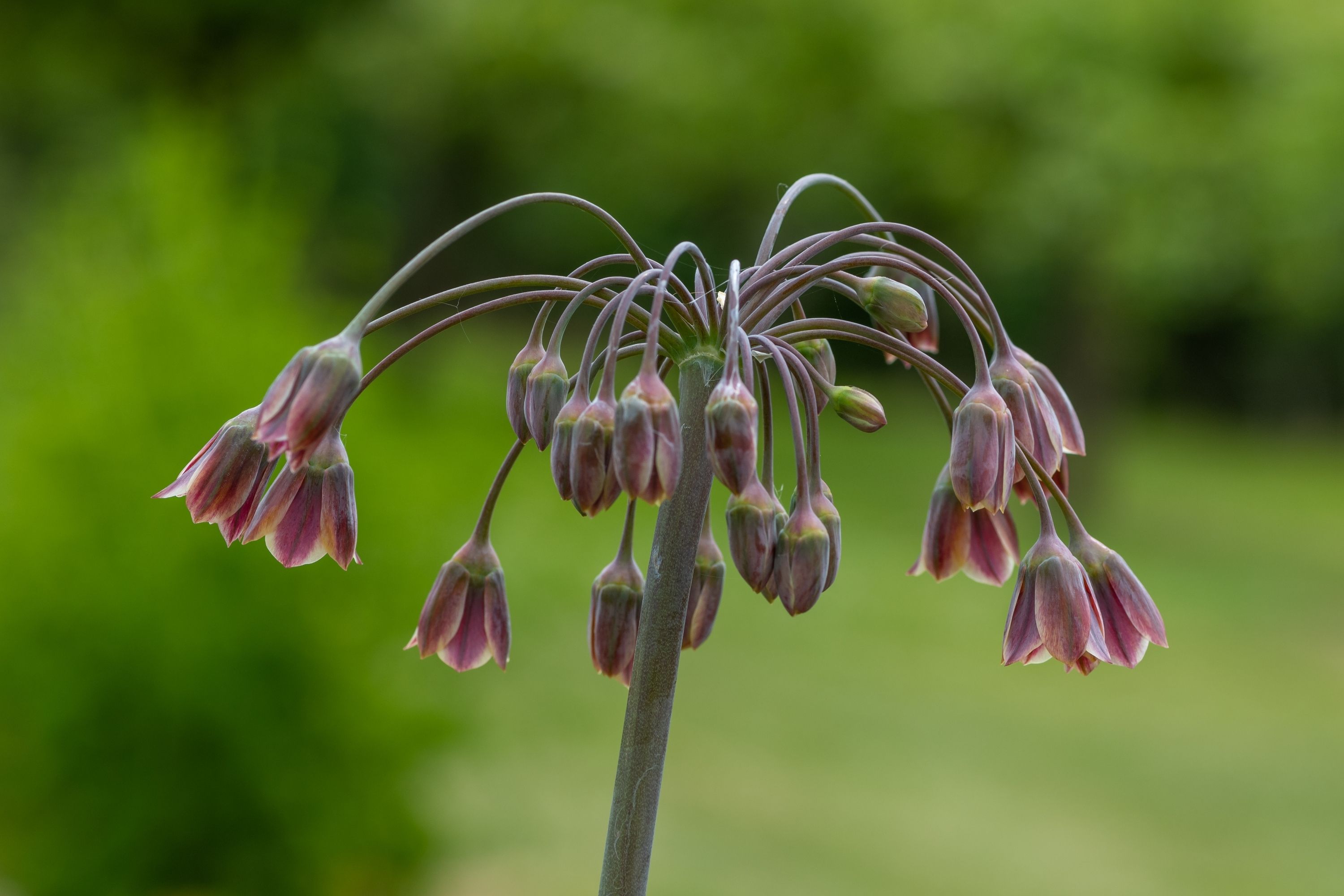Honey Garlic
(Allium siculum)

Description
Allium siculum (syn. Nectaroscordum siculum), known as honey garlic, Sicilian honey lily, Sicilian honey garlic, or Mediterranean bells, is a European and Turkish species of plants genus Allium. It is native to the regions around the Mediterranean and Black Seas, and grown in other regions as an ornamental and as a culinary herb. Allium siculum is native to Turkey, Crimea, Greece, Bulgaria, Romania, southern France including Corsica, and Italy (Basilicata, Abruzzo, Umbria, Toscana, Sicily, Sardinia), growing in damp, shady woods. It has showy clusters of gracefully drooping bell-shaped blossoms produced in May to early June sitting atop a tall green stem, to 1.2 m in height. The florets (blossoms), suspended on long drooping pedicels, are cream colored with a maroon streak down each petal, have white flared tips, and are tinted green at the base. The blossoms are followed by decorative, erect seed pods in late summer. The blue-gray foliage is triangular in cross-section and strongly twisting along the length of the ascending leaves. A penetrating, skunky odor is released when the plant is cut. Allium siculum is grown as an ornamental in flower gardens. It has showy, drooping blossoms, with each umbel (clusters of flowers on stalks originating in the same place) having up to 30 individual flowers, which are white, pink, and green in colour. Although the flowers initially face downwards, they turn to face upwards just before forming seedheads. It also has unusual twisted foliage. Unlike the majority of other Allium species, A. siculum grows well in shade. Allium is a genus of monocotyledonous flowering plants that includes hundreds of species, including the cultivated onion, garlic, scallion, shallot, leek, and chives. The generic name Allium is the Latin word for garlic, and the type species for the genus is Allium sativum which means "cultivated garlic". Carl Linnaeus first described the genus Allium in 1753. Some sources refer to Greek ἀλέω (aleo, to avoid) by reason of the smell of garlic. Various Allium have been cultivated from the earliest times, and about a dozen species are economically important as crops, or garden vegetables, and an increasing number of species are important as ornamental plants. The decision to include a species in the genus Allium is taxonomically difficult, and species boundaries are unclear. Estimates of the number of species are as low as 260, and as high as 979.
Taxonomic tree:







